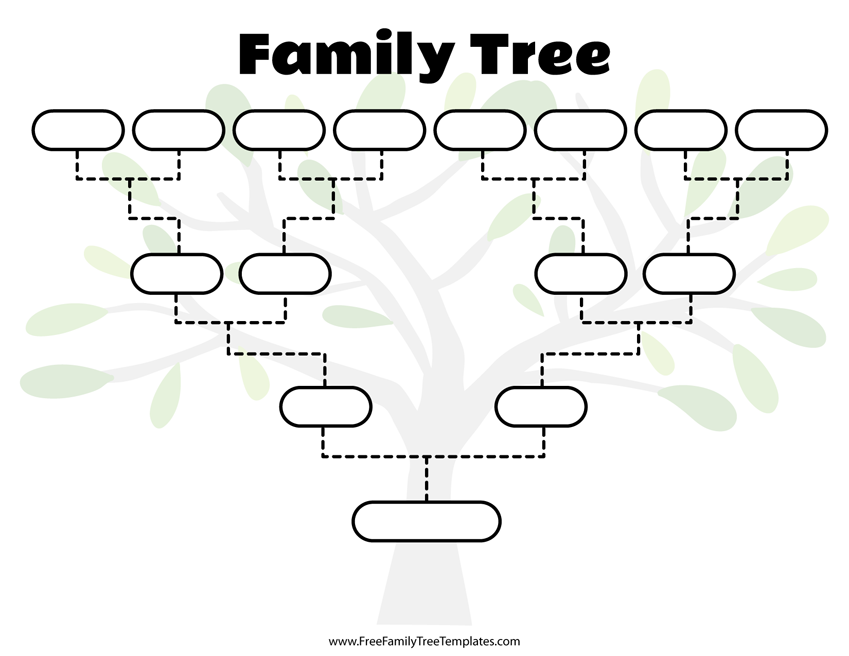Filling In The Gaps In Your Family History

Learning about your family history can be tough whenever you don’t have all the information. Time erases names on census rolls, blurs the faces of old stories, and leaves whispers where voices once were. Those blank spots linger, pressing questions without easy answers: What defines where you truly belong? The answers don’t just map your lineage; they shape how you see yourself. For many, those silences strike a deeply personal chord.
But here’s the thing: Every gap is a doorway. Behind it? Forgotten lives waiting to be rediscovered, threads of the past ready to reconnect.
In this article, you will find simple steps to deal with these issues step by step. Combining conventional methods, modern tools, and teamwork will help you restore your family history. Perhaps most importantly, you’ll secure the humanity of your ancestors for years ahead.
1. Start With What You Know
Before diving into unknowns, ground your research in verified facts. Organizing existing information helps identify gaps and prioritize the next steps.
Organize Existing Documents
Sort through birth certificates, marriage licenses, and heirlooms like letters or diaries. Fragile items, such as newspaper clippings, should be digitized using smartphone apps or scanners to prevent decay.
Create a chronological timeline of confirmed events (births, deaths, migrations) to visualize patterns. Label digital files clearly. For example, “AnnaKowalski_Marriage_1923” to streamline retrieval. Note inconsistencies, like conflicting birth years, as clues for further investigation.
Interview Relatives
Older family members often hold irreplaceable knowledge. Ask open-ended questions: “What traditions did your parents cherish?” or “How did our family adapt during hard times?” Record conversations (with consent) to capture tone and emotion.
Compare stories across relatives; recurring details, like descriptions of an ancestral farm, validate facts. Respect boundaries; avoid pressing sensitive topics until trust is established.
Map Known Lineage
Use free templates or genealogy software to build a family tree. Start with yourself and expand backward, citing sources (e.g., “1940 Census, Ancestry.com”). Color-code maternal and paternal lines for clarity. Inconsistencies, such as varying spellings of surnames, highlight research priorities. Share drafts with relatives to crowdsource corrections or missing links.
2. Leverage Public and Historical Records
Public archives and digitized databases are goldmines for genealogists. They provide context and evidence to bridge gaps.
Census Records
Census data reveals occupations, addresses, and household members, offering snapshots of ancestors’ lives. Track individuals across decades to spot migrations or name variations. For example, a surname like “Mueller” might appear as “Miller” in later records.
Many national archives provide free access to digitized censuses. However, handwritten entries from past centuries can be tricky to read. Don’t worry! Online guides exist to help you decode faded ink, archaic handwriting styles, or abbreviations like “occ.” for occupation.
Immigration and Naturalization Documents
Passenger lists, citizenship papers, and border-crossing records clarify migration paths. Look for alternate spellings; names were often anglicized at entry points. Regional archives or heritage societies may hold niche records.
Naturalization papers sometimes include hometown details, helping trace European or Asian roots.
3. Incorporate Oral Histories
Stories passed down through generations add depth to names and dates. They humanize your research and uncover overlooked clues.
Prepare Interview Questions
Don’t ask interview questions that only expect a yes or no answer. Questions that encourage stories, thoughts, and better understanding are more worthwhile.
Additionally, ask interviewees to bring photographs or family heirlooms. Often, having something real before us can trigger vivid memories.
Start with light topics like holidays or former pets for storytellers who might get upset. Once trust has been established, more delicate subjects will be discussed.
Record and Preserve Stories
Transcribe interviews to keep their content for years later. Save audio files in formats like MP3 or WAV to ensure long-term access. Use descriptive keywords like names, locations, or subjects when labeling files. For example, name a file “Great Depression stories” to allow easier future search.
Share clips with younger relatives through private family websites or USB drives. This can spark their curiosity and encourage them to engage with family history. For video recordings, add captions to clarify unclear speech or regional dialects. This ensures everyone can understand the content, regardless of audio quality.
Cross-Check Oral Histories
Compare spoken accounts with official records. For example, if a relative mentions a hometown, verify its existence through historical maps or church registries. Discrepancies, like a birthplace conflicting with census data, may signal transcription errors or family myths. Use conflicting details as research prompts rather than dismissing them outright.
4. Use DNA Testing Strategically
Genetic testing has revolutionized genealogy, but it’s most powerful when paired with traditional research.
Understanding DNA Test Types
Autosomal tests identify relatives across all branches within five generations, making them ideal for recent genealogy. Y-DNA and mitochondrial tests trace paternal or maternal lines specifically, useful for deep ancestral origins.
Some DNA testing services also offer health reports, though these require careful interpretation. Always review privacy policies before submitting samples.
Connecting With Genetic Matches
Reach out to distant cousins who share DNA segments. Start with a brief, polite message: “Hi! We’re genetic matches. Would you be open to comparing family trees?” Collaborate to identify common ancestors using shared surnames or locations. Be patient; some matches may not respond due to privacy concerns or lack of knowledge.
Ethical Considerations
DNA testing may bring up surprises, for instance, the presence of unknown siblings or ethnic backgrounds. Prepare yourself to encounter surprises, and surely respect the wishes of others regarding what you find out. Let your relatives make decisions about these tests; respecting their autonomy is important.
5. Overcome Common Research Challenges
Obstacles like missing records or name changes are common. Here’s how to navigate them.
Dealing With Name Changes
Immigrants often adapted their names to assimilate. Search phonetic variations or nicknames in databases (e.g., “Bill” for “William”). Church registries or local newspapers sometimes list alternate names. For women, track maiden names through marriage licenses or children’s birth certificates.
Addressing Missing Records
Natural disasters, wars, or bureaucratic errors can destroy documents.
- Search alternative sources (e.g., church records instead of civil registries).
- Explore regional or community archives.
- Join genealogy forums to crowdsource solutions.
Navigating Cultural Barriers
Language differences or colonial-era record gaps require creativity. Consult historians specializing in your ancestors’ region for context. Use translation tools for foreign documents, but verify critical details with professionals. For Indigenous ancestry, collaborate with cultural liaisons to ensure respectful research practices.
6. Preserve and Share Your Findings
Completing your research is only half the journey. Ensuring it survives for future generations matters just as much.
Digitize Your Research
Store files in cloud services or external drives with clear folder structures (e.g., “Surnames > Smith > Photos”). Use metadata like dates and locations to streamline searches. Update backups regularly and store physical copies in fireproof boxes.
Create a Family History Book
Combine narratives, photos, and charts into a printed or digital book. Include citations for fact-checking and an index for quick reference. For visual appeal, add timelines or maps showing migration routes. Distribute copies to relatives or donate one to a local historical society.
Share Online Responsibly
Posting trees or documents publicly can help others, but redact living relatives’ details to prevent identity theft. Use privacy settings on genealogy platforms to control access. Consider starting a private family blog to share stories without exposing sensitive data.
Conclusion
To fill gaps in family history, you need patience, creativity, and teamwork. Combine documents, stories, and DNA insights to honor your ancestors. Each missing piece is a puzzle to solve, not a dead end.As you build a family tree, you blend facts with humanity. This effort leaves a lasting resource for future generations. Start small, stay organized, and celebrate each find. Your work will turn scattered names and dates into a clear story. This way, your family’s history stays alive and accessible.
Miss Clipping Out Stories to Save for Later?
Click the Purchase Story button below to order a print of this story. We will print it for you on matte photo paper to keep forever.

